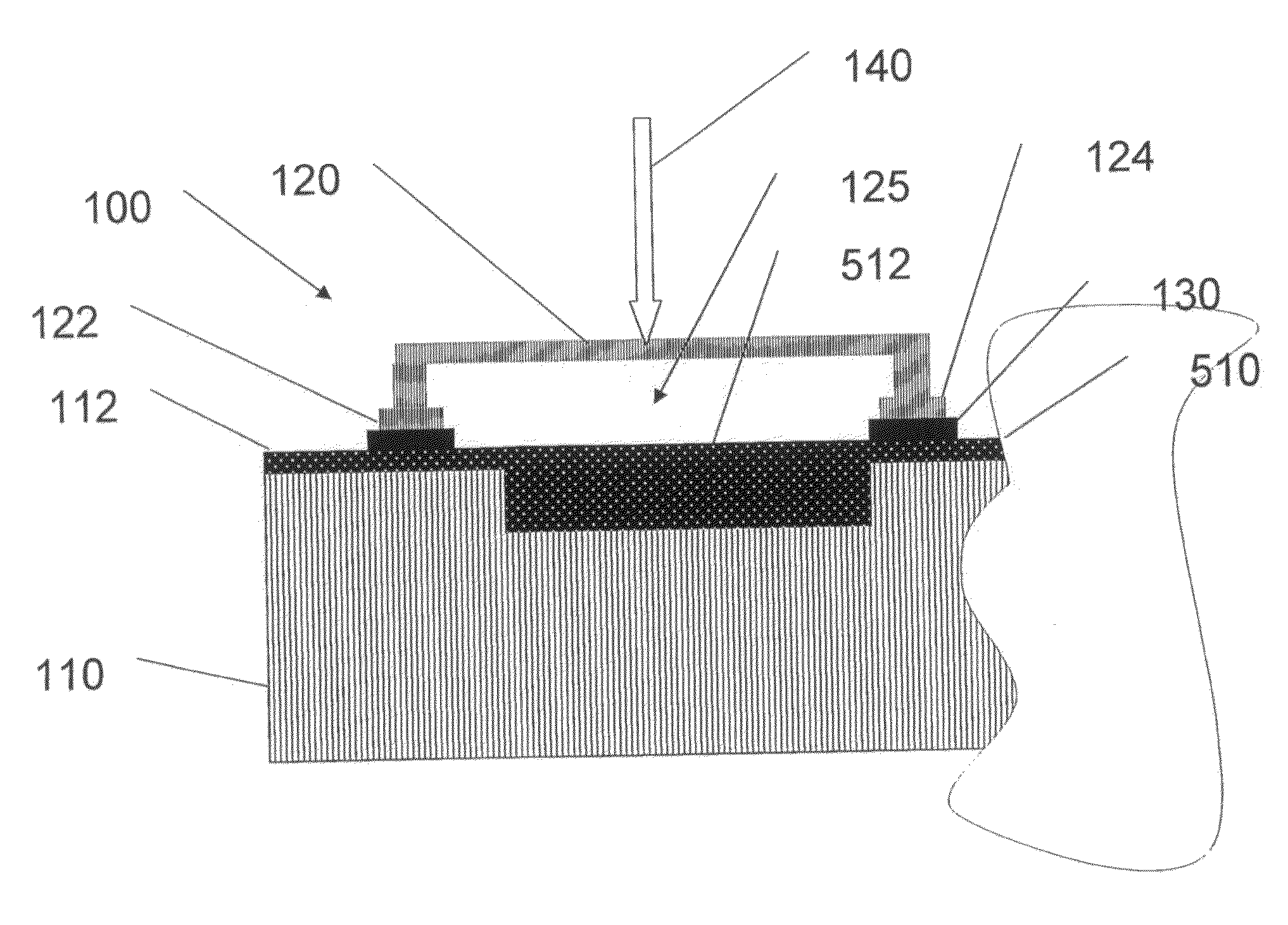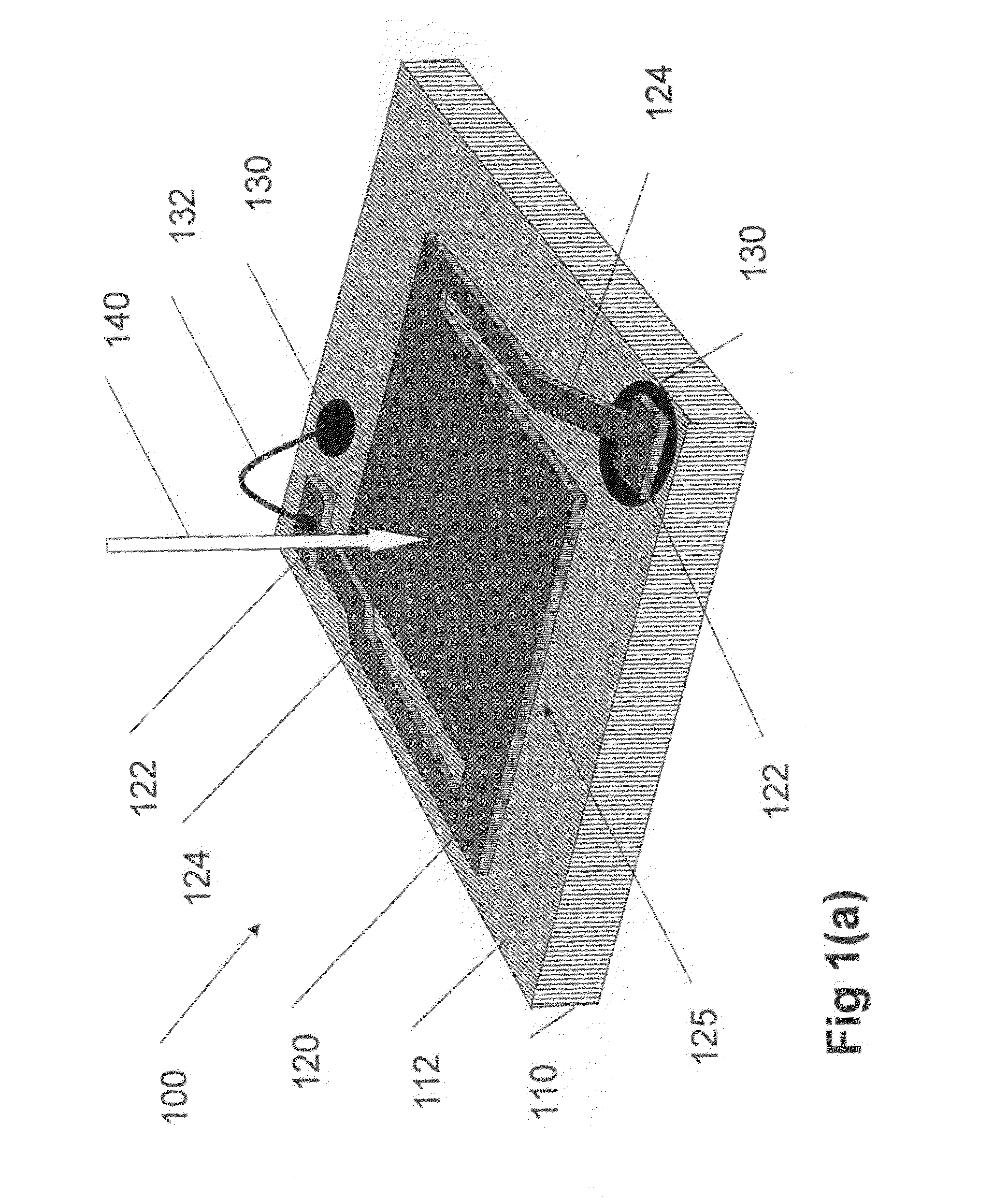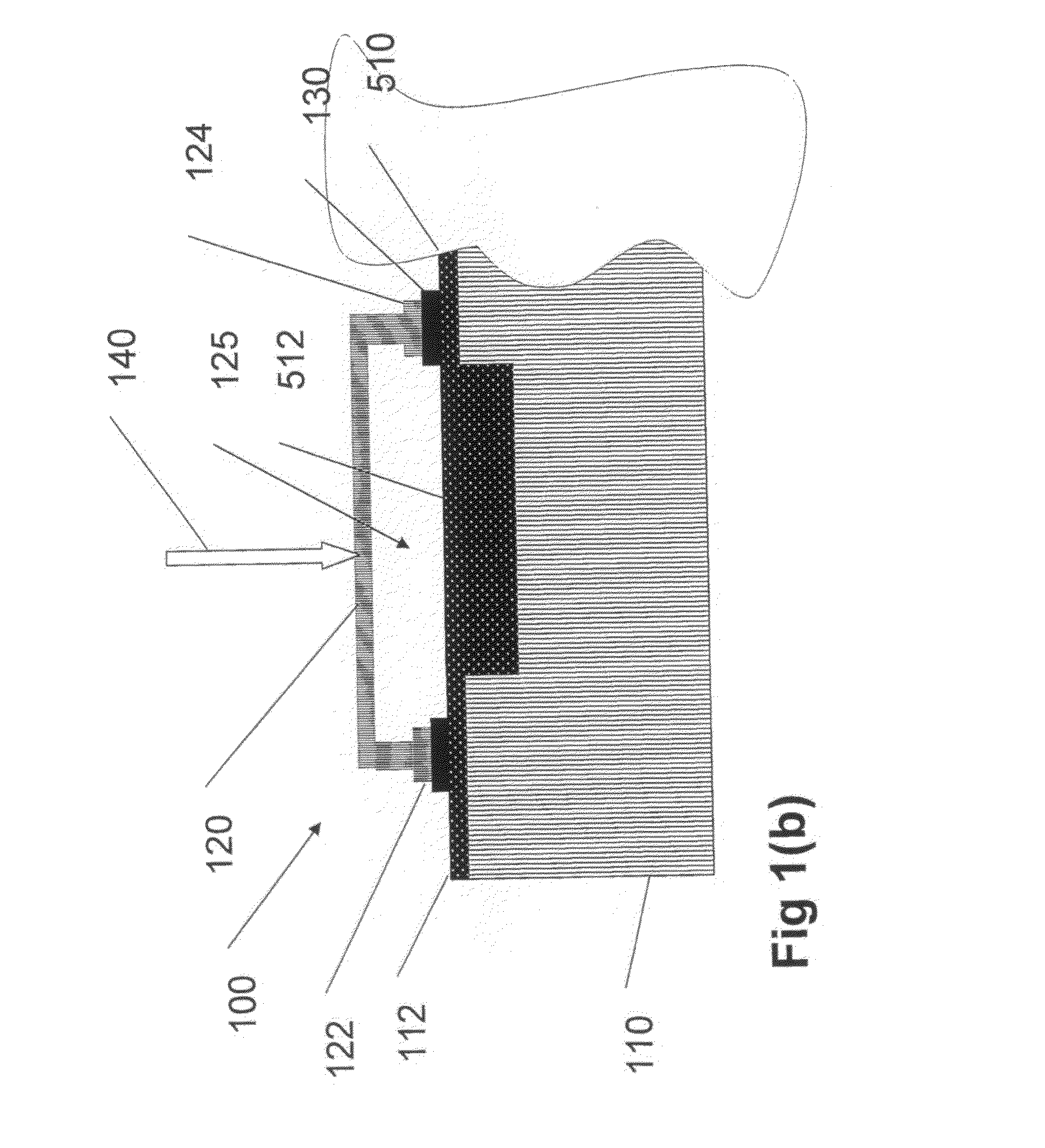Thermal detection and imaging of electromagnetic radiation
a technology of electromagnetic radiation and thermal detection, applied in the direction of thermoelectric devices, optical radiation measurement, instruments, etc., can solve the problems of low thermal diffusivity, non-optimal absorption coupling, and plasmon resonance phenomena for thermal detection of far-field radiation, which have not yet been proposed, and achieve high-efficiency thermal (bolometric) detection, reduce cooling requirements, and reduce power absorption efficiency
- Summary
- Abstract
- Description
- Claims
- Application Information
AI Technical Summary
Benefits of technology
Problems solved by technology
Method used
Image
Examples
Embodiment Construction
[0064]The present invention relates to devices, methods and systems for highly efficient detection of ultraviolet, visible and infrared radiation using novel bolometric elements.
[0065]Before explaining at least one embodiment of the invention in detail, it is to be understood that the invention is not limited in its application to the details of construction and the arrangement of the components set forth in the following description or illustrated in the drawings. The invention is capable of other embodiments or of being practiced or carried out in various ways. Also, it is to be understood that the phraseology and terminology employed herein is for the purpose of description and should not be regarded as limiting.
[0066]In discussion of the various figures described herein below, like numbers refer to like parts. The drawings are generally not to scale. For clarity, non-essential elements were omitted from some of the drawings.
[0067]As used herein, an element or step recited in the...
PUM
| Property | Measurement | Unit |
|---|---|---|
| reflectance | aaaaa | aaaaa |
| loss angle | aaaaa | aaaaa |
| loss angle | aaaaa | aaaaa |
Abstract
Description
Claims
Application Information
 Login to View More
Login to View More - R&D
- Intellectual Property
- Life Sciences
- Materials
- Tech Scout
- Unparalleled Data Quality
- Higher Quality Content
- 60% Fewer Hallucinations
Browse by: Latest US Patents, China's latest patents, Technical Efficacy Thesaurus, Application Domain, Technology Topic, Popular Technical Reports.
© 2025 PatSnap. All rights reserved.Legal|Privacy policy|Modern Slavery Act Transparency Statement|Sitemap|About US| Contact US: help@patsnap.com



